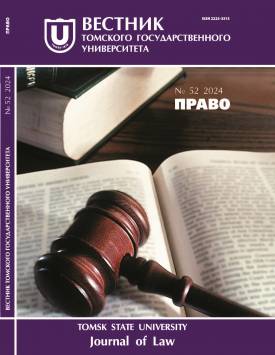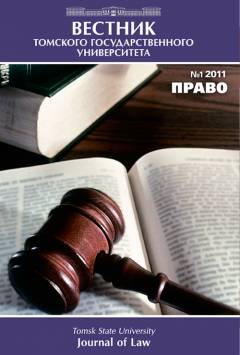The Austrian constitutional model of the division of competence between the Federation and the Lands
The constitutional development of the Austrian state at the turn of the XIX - early XX centuries was characterized by a combination of centralist and federalist tendencies. One of the controversial issues during the monarchy, and later in the F irst Austrian Republic, was the issue of the division of competence between the central government and its constituent parts. The Austrian half of the monarchy (Cisleithania), despite the long tradition of separate crown lands, was a unitary state, although decentralized. The division of competence between the center and the lands was based on the February Patent of 1861 and the December Constitution of 1867. At the same time, the issue of the correlation of different types of laws has not received certain regulation. In constitutional practice, there is an indisputable doctrine about the equal force of the imperial laws and the laws of the lands. After the collapse of the Austro-Hungarian Empire, the state of German Austria was created, which, according to Austrian legal historians, arose as a decentralized unitary state. The constitutional processes took place with the active participation of political parties. In the coalition agreement concluded on October 17, 1919 between the Social Democrats and the Christian Socialists, it was stated that the constitution should be adopted as soon as possible. By the beginning of the work of the Subcommittee of the Constitutional Committee in July 1920, agreement had been reached on a significant part of the constitutional text. At the same time, the issues of the division of competence between the Federation and the lands, as well as the relationship between federal law and land law, remained controversial. The Federal Constitutional Law, adopted on October 1, 1920 by the Constituent National Assembly, establishes a complex model for dividing competence between the federation and the lands. The theoretical justification for this approach to the regulation of the division of competence was presented in the first commentary to the Federal Constitutional Law, co-authored by Hans Kelsen (Professor at the University of Vienna, member of the Constitutional Court), Georg Froelich (Adviser to the Minister of the Federal Chancellery) and Adolf Merkle (Professor at the University of Vienna) (1922). The Austrian model of the division of competence between the federation and the lands remains unique, theoretically grounded, and characterized by political and institutional continuity. The author declares no conflicts of interests.
Keywords
Federal Constitutional Law of 1920, Austrian federalism, lands, division of competence, KelsenAuthors
| Name | Organization | |
| Krovelshchikova Valeria V. | Tomsk State University | valera2009@yandex.ru |
References

The Austrian constitutional model of the division of competence between the Federation and the Lands | Tomsk State University Journal of Law. 2024. № 52. DOI: 10.17223/22253513/52/2
